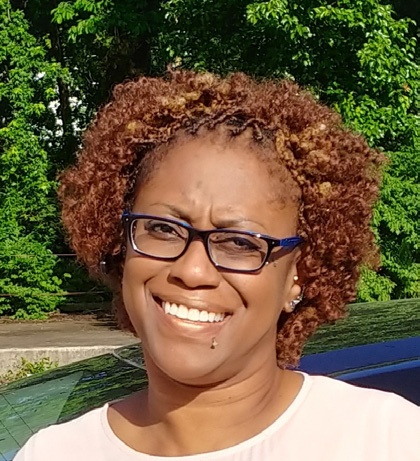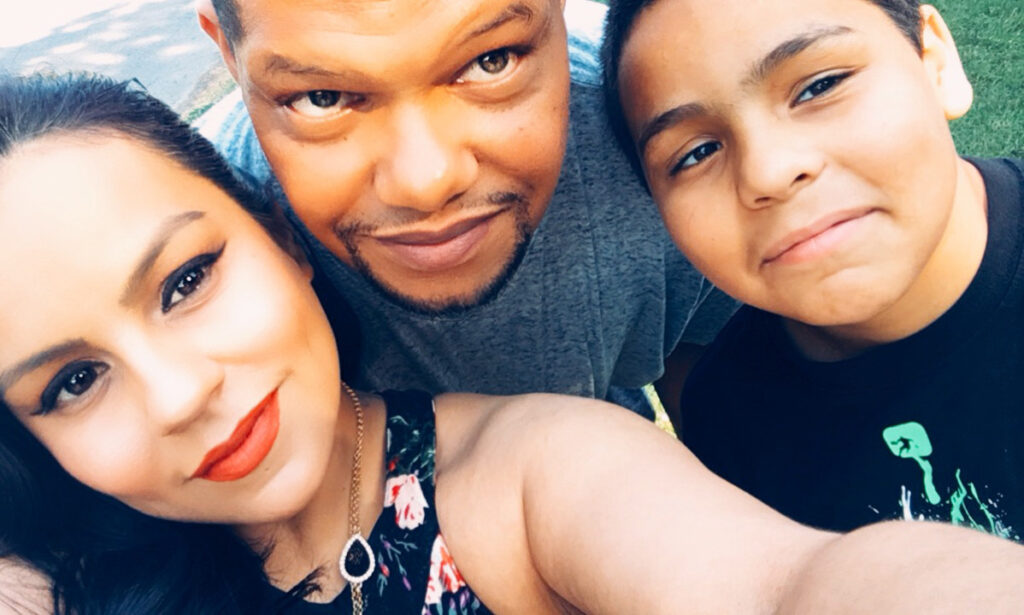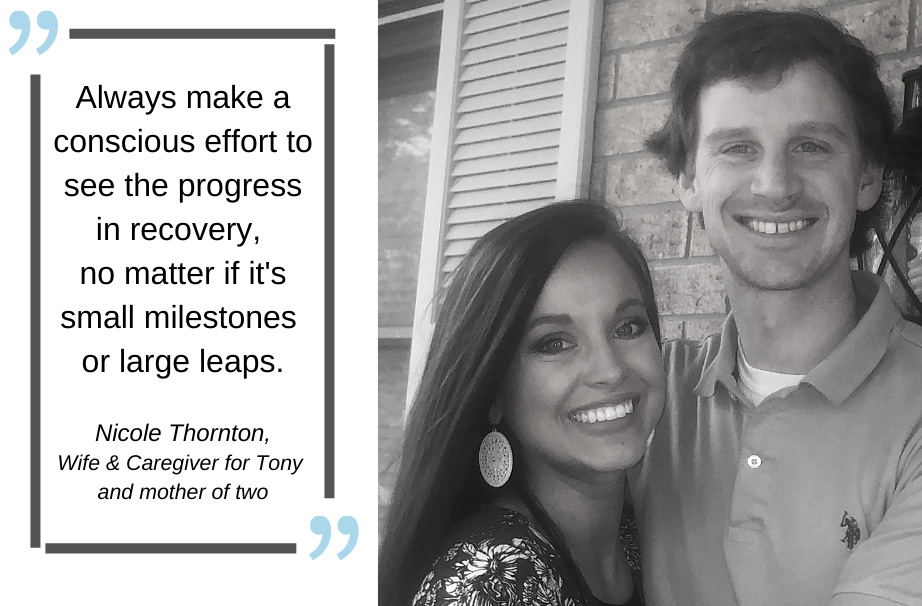Ask the Specialist: Support Groups
by D. NeCol Whitehead, Ph.D.

Independent Living Specialist, Peer Support Leader
Sources for Community Independent Living, Inc.
You are not alone! A support group is a place for people to share their experiences, feelings, and coping strategies about a shared issue. Medical providers, family, and friends may not offer enough emotional support for TBI survivors or their loved ones. A support group can help fill this gap, so people feel less isolated as they make connections with other people facing similar situations.
During support groups, people share their experiences and talk about what they have learned in their family’s TBI journey. Often, people find that their feelings, worries, problems, and symptoms are very similar to others.
Benefits of support groups may include:
- Feeling less lonely, isolated, or judged
- Less stress, depression, anxiety, or fatigue
- Better coping skills for everyday challenges
- Improved understanding of TBI and your own experience with it
- Access to more resources and information
Since the onset of the COVID-19 pandemic, the way we have held and participated in support groups has drastically changed. Due to social distancing and limits on gatherings, there continues to be an increase of secure virtual platforms. UAMS, in partnership with Sources, offers secure, virtual support groups that allow people to join from the comfort of their home using their computer, smartphone, or tablet. Some caregivers and survivors may find it easier to participate in a virtual support group than in person.
Joining a TBI support group can be scary, and you may be nervous about sharing personal issues with people you don’t know. Try our support group for a few weeks. Maybe you just listen at first. If it doesn’t feel like a good fit for you, consider a different support group or a different support group format. Over time, however, contributing your own ideas and experiences may help you get more out of a support group.
Remember that a support group is not a substitute for regular medical care or standard counseling. If you don’t currently see a counselor, Arkansas has a totally free hotline called ARConnect to help you find a qualified counselor or therapist. They can even offer help to people without health insurance. Call 800-482-9921 at any time 24/7 to get connected!
Want to suggest a topic? Email us at braininjury@uams.edu.
A Caregiver’s Perspective: Alex Tolerson’s Story
As Told to Amy Moses
“Remember to celebrate everything, no matter how little it is, because the little changes will add up to one big step before you know it.”
Vida Tolerson

COVID-19 has impacted everyone in the past year, especially families with loved ones who have been hospitalized after suffering traumatic injuries. Because of the pandemic, families have faced additional hurdles in getting care and support for people living with devastating injuries.
On March 21, 2020, Alex Tolerson suffered a seizure while driving, causing him to swerve off the road, hit a tree, spin around, and then slam into a brick wall. After being extracted from his car, he was airlifted from northeast Arkansas to the University of Arkansas for Medical Sciences (UAMS) in Little Rock.
During this time, COVID-19 was in the early stages and many hospitals were limiting visitation. Alex’s wife, Vida, happened to be in Little Rock at Arkansas Children’s Hospital with their son who was recovering from a snake bite. Because of the virus, her job as a dental assistant was on hold due to her office being closed. On hearing the news of her husband’s accident, Vida took an Uber to the UAMS Trauma Center with the hopes of seeing her husband before he was moved to the intensive care unit (ICU), where visitors would not be allowed due to COVID-19.
Alex had a severe diffuse axonal injury, (when the brain moves inside the skull, tearing the connecting nerve fibers), frontal lobe damage, brain stem lesions, and a C2 spinal fracture. Due to the severity of his injuries and the COVID-19 restrictions, Vida was unable to see him for over a month. During this time, she could only get information on her husband’s condition through phone calls to the hospital.
Looking back, Vida recalls, “the feeling of hopelessness and helplessness is grave, because he’s fighting for his life, and there’s nothing I can do for him.”
After 9 days in the ICU, Alex was moved to a long-term acute care facility (LTAC), but due to COVID-19, visitor restrictions continued. This was difficult for Vida because she not only wanted to be at her husband’s side, she also needed to learn how to care for him if she was to bring him home. Vida spent hours researching online to learn how to best care for Alex, who was now living with a TBI. She continued waiting for the moment that she could be taught techniques by the healthcare team at the LTAC.
Those teaching moments never came, due to the continued restrictions of COVID-19. Vida texted him multiple times throughout the day when he was in the hospital, even though she had his phone. His daughter and several friends also sent him well-wishes. When he came home, Vida read all of the texts to him; she wanted him to know that he wasn’t alone, even when he had been at the hospital without family or friends by his side.
After 31 days, Alex finally arrived home by ambulance. However, Vida had no experience or support to care for him. He was in a hospital bed and completely unresponsive. Vida said “It was the scariest moment of my life. He was basically dumped at my door by the ambulance and all we had was a hospital bed. No training, no meds, no food, nothing.” The hospice nurse who was supposed to be there before he got home to go over his care was delayed, so Vida spent a lot of time providing Alex with some much-needed hygienic care.
The only options through their insurance were for Alex to come home on “hospice” or be sent to a nursing home. Hospice is care given to those who are considered to be at the end of life. Even though Alex was likely to survive at this point, the nursing home was not an option, because COVID-19 was a risk that Vida did not want take. Vida became a full-time caregiver, while also
caring for two school-aged children. She dove in to her new role by learning everything possible about providing care for Alex.
In the early days of Alex’s recovery, he would sporadically open his eyes, but he was still neurostorming, meaning that he was unable to control his breathing, temperature, and heartbeat.
Alex would have some days where he was unresponsive or would become overly stimulated, but the family learned to adjust and recognize cues to his symptoms.
Care options were limited due to insurance restrictions. However, Eddie Williams, a nurse educator with the Trauma Rehabilitation Resources Program at UAMS, made a house call to evaluate Alex’s condition.
Eddie determined that Alex would be a good candidate for telemedicine visits with a physical medicine rehabilitation specialist, as the family lives an hour and a half from Little Rock and would have a difficult time transporting Alex to the clinic. Telemedicine helped the family avoid a trip by ambulance and kept them in their home environment with less risk of COVID-19 exposure. The doctor was able to evaluate Alex and change his medication, which brought him out of the sedated state that he was in at the time.
Since then, Alex has had several telemedicine visits, and is now in a state known as minimally conscious, meaning that he shows signs of being more aware of his surroundings, and his physical movements have increased. He is able to follow certain commands, reach for items, and squeeze Vida’s hand. With this improvement, he has been able to go through in-house rehab at Baptist Health Rehabilitation Institute (BHRI) in Little Rock and continues to show progress.
Alex has had his first round of Botox treatments and will be going in for placement of a Baclofen pump trial soon to help with his muscle spasticity. He’s beginning to learn to use his voice, and he’s even attempted to stand on a few occasions!
Alex will be a grandpa soon, and Vida knows he would have been so excited. She is sure he still is, but in his own way now. Vida said “he’s here but the reflection of who he was sometimes gets difficult. I miss his voice, the hugs that let me know that no matter what everything would be okay.”
While the Tolersons don’t know what the future may hold, they have come together as a family to provide Alex with the best possible care, and their strength and determination are inspirational.
Vida’s Advice for Caregivers:
“It’s a very hard job being a caregiver but it’s amazing to be able to watch all of these things happen first hand. Every little step towards the goal means so much and is a victory that you can share with your loved one. Remember to celebrate everything, no matter how little it is because the little changes will add up to one big step before you know it”
“I know how difficult it is sometimes to do selfcare, but remember even if you take 5 minutes to get off your feet, that’s giving you some YOU time. Stretch, meditate, or go have a bite of food. Those are small things you can do for yourself. Napping is absolutely important! I try and take one every chance I get. Even if you don’t fall asleep, you can allow your body to recharge by just laying down.”
Want to share your story? Email us at braininjury@uams.edu.
Special Feature: Caregiver Highlight

Our second recognized caregiver is Nicole Thornton. Nicole Thornton and her husband Tony have been together since junior high. In May 2018, Tony was involved in a head-on collision that changed their lives forever. Nicole is a mother of two, a teacher, and steadfast support for Tony. Nicole has seen Tony through two different rehabilitation stays that were out of state; a 3-month stay at Craig Rehab in Denver and a 3-month stay at Pate Rehab in Dallas, all while caring for two young children.
Once Tony returned home, Nicole stuck with Tony through a long bout with depression and suicidal thoughts, and she helped him get the care and medication adjustments he needed to get his mental health in order. Tony can’t do a lot of the things he enjoyed before, and Nicole continues to encourage him toward new hobbies and goals. Last spring, Nicole emailed our program her family’s story and invited us to see Tony speak at an EMS conference at the state capitol. Nicole came to support him and even brought the kids. It was such a blessing and encouragement to see this little family thriving and so positive, despite so many challenges they have endured.
Nicole has some advice to share with other caregivers: “Always make a conscious effort to see the progress in recovery, no matter if it’s small milestones or large leaps. It’s important to look for things each day that have improved.
“I also think it is so important to find someone outside of your immediate circle to talk with. Caregiving can be emotionally draining, so it’s so important to talk through the tough stuff. With Tony’s TBI, discussing stressful situations makes him upset, so I know when I need to talk through life things, I either need to forewarn him about our conversation or if it’s personal, I talk to my “go-to” person.
“It is also important for caregivers to find ways to have fun with their person (whomever they’re caring for). When I plan things for us to do, I think of things he will enjoy and can physically and mentally handle. I also try to pick things that won’t remind him of things he could do but can’t yet (drumming, walking long distancing, riding motorcycles, carrying things, etc.) or things that could embarrass him. That eliminates his frustrations. Working through those details together helps us be fully prepared and have more fun.”
Social Security Pointers: Social Security in Plain Language
By Phylis Dills, Social Security Public Affairs Specialist
The Social Security Administration is required to conduct continuing eligibility reviews for disabled beneficiaries every three years. This process requires that beneficiaries complete a Continuing Disability Review mailer to update information about their medical conditions and recent treatments.
We now offer an online option to complete this update and provide any supporting documents about your medical treatment or your work.
We designed this new form with convenience in mind — and to save you time.
You can access the online form at www.ssa.gov/ssa455-online-form. (Use either Microsoft Edge or Google Chrome for the best experience with this site.)
You must have received a request for an updated disability report in the mail
before you complete a review. To complete the form, you will need:
- Your Social Security number
- Your current address and phone number
- A valid email address
Also, once you “Click to Sign,” you will receive an email from echosign.com asking you to confirm your digital signature. Check your junk folder if you don’t receive it within a few minutes. Your signature isn’t complete — and your form won’t be processed — until you complete the instructions in your email.
Please visit our blog at blog.ssa.gov for more articles — and our frequently
asked questions page at ssa.gov/faq. Please be sure to let your friends and
loved ones know about this new online option.
NOTE: The mention of Microsoft Edge and Google Chrome is for informational
purposes only and does not constitute an endorsement by the Social Security
Administration.
Please be aware that past newsletter issues may contain outdated information. For the latest updates on resources and events, visit our website or contact us at braininjury@uams.edu with any questions.
